Aristote believed that laughter is what separates us from the beasts. Today, scientists argue that non-human species, such as primates and even rats, do giggle, guffaw and burst into laugher.
So if animals laugh, how about technological devices, the species we like to surround ourselves with? That’s what an Interactivos? two week workshop held last August at the Centro Multimedia – Centro Nacional de las Artes in Mexico D.F tried to understand.
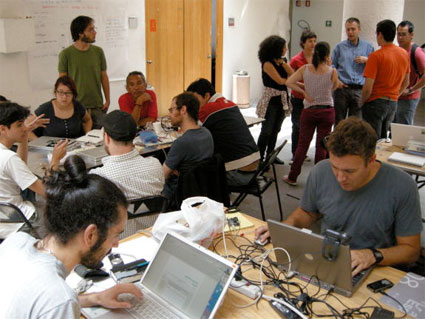
The event, lead by Zachary Lieberman, Leslie García and Alejandro Tamayo asked participants to come up with ideas and prototypes that engage with a series of questions:
What mechanisms lead to laughter? What are the social and political implications? What happens if we understand laughter as a possible form of communication between humans and machines? Can machines have a sense of humour? How can machines make us laugh? What is a machine or software programme’s cultural milieu? How can a machine handle the unexpected? What kind of narratives/machines can be built to provoke various feelings related to laughter?
The 8 projects developed over the workshop use hardware and software tools to create prototypes that explore the relations between machines and humour/laughter.
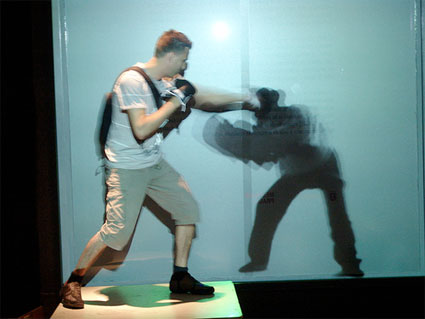 Moyote I, by Christian Saucedo Rodríguez. Image by Alejandro Tamayo
Moyote I, by Christian Saucedo Rodríguez. Image by Alejandro Tamayo
Participants developed computers that tell each other silly jokes once you’ve turned your back, images that follow you as you walk, an absurdity tracker, a robot that replies to users with media sampled memories, a machine that likes to be tickled, etc.
I asked Alejandro Tamayo to give us a few details about the workshop:
One of the questions that the Interactivos? workshop wanted to explore in Mexico was ‘ Can machines have a sense of humour?’ Did you find any answer to that demand?
I don’t think we found an answer for that, instead we came up with more questions and ideas for future projects to explore. For me it seems possible to create machines that understand human sense of humor, as humor follows certain rules it can be abstracted and implemented into some complex algorithms that machines can follow, but creating machines with their own sense of humor is another thing. If we design a machine with a sense of humor it seemed unavoidable that we will inject our humanity into it because it is the only reference about humor we have in hand. On the other hand, humor and true laughter bring lots of benefits in terms of health to us, i wonder how this can also be applied to machines. But any way, if we were to create machine humor, will we understand it? How would we define it as humorous?
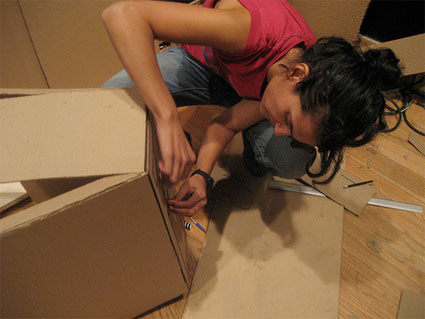 Building Catty CPU Cliques. Image courtesy Jenny Chowdhury
Building Catty CPU Cliques. Image courtesy Jenny Chowdhury
In concrete the projects of Jenny Chowdhury (Catty CPU Cliques), Carla Capeto (Sensitive Water) and Leonor Torres (J.A.-J.A. Jockey Action-Jolly Answer) raised questions related to non-human approaches to humor and laughter.
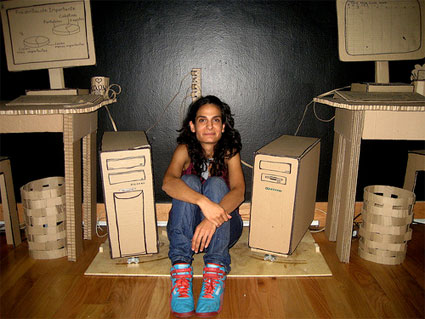 Catty CPU Cliques. Image courtesy Jenny Chowdhury
Catty CPU Cliques. Image courtesy Jenny Chowdhury
For Jenny, the idea of machine humor was directly addressed because her office computers were to make fun of their users when they were left alone. At the end Jenny came up with funny jokes, for and about humans, being told by computers.
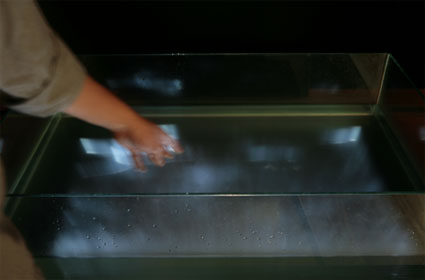
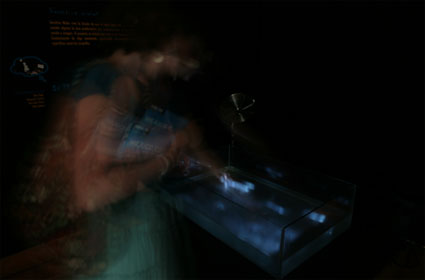 Sensitive water. More images
Sensitive water. More images
The case of Carla was different, she proposed an aquarium that would laugh when being touched, so we were all confronted with the question of how water would laugh. There were many approaches to it and many of us suggested different options ranging from timid laughter to hysterical. As a matter of fact, we are starting to discover that we are not the only exclusive animals that laugh, apparently rats do it as well when they are tickled.
Finally, the project of Leonor Torres investigated the idea of a strange piece of metal that responded to tickles. Leonor recorded her own voices and reactions to tickles, so when people touched a rusty piece of metal extracted from a de-mantled car they got the strange reaction of a female giggle.
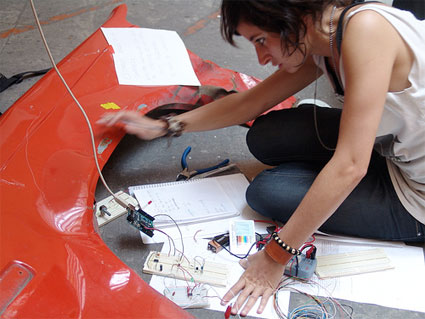 J.A.-J.A. Jockey Action-Jolly Answer. Image courtesy Alejandro Tamayo
J.A.-J.A. Jockey Action-Jolly Answer. Image courtesy Alejandro Tamayo
Leo’s project can also drive us to think about the opposite: can we be tickled by a piece of metal? In fact during the planning of Interactivos? we found some early experiments conducted by psychologists in this area: some kind of tickling machine was developed back in 1997, it worked more or less like The Turk: there was a hidden person in a room in charge of doing tickles to other psychology students with his arm and also with a robotic arm. Apparently “the machine” was as effective as a human tickler because the patients couldn’t differentiate the robotic arm from that of a human (some kind of a Turing test but for ticklishness!) but there are still some doubts about the way the experiments were conducted because after all there was a human behind.
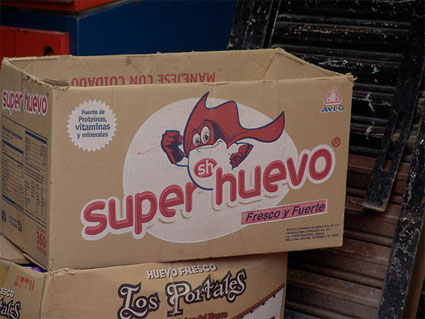 Photo by Alejandro Tamayo
Photo by Alejandro Tamayo
I followed the workshop from afar by looking at the flickr images of a few friends who happened to participate to the workshop. It seems that there’s quite a high dose of sense of humour in Mexico. Can you tell us something about it?
Oh i don’t know, i think all starts with the metro safety guards.
Images of the workshop on the Medialab set and on the ones made by Alejandro and Jenny.
